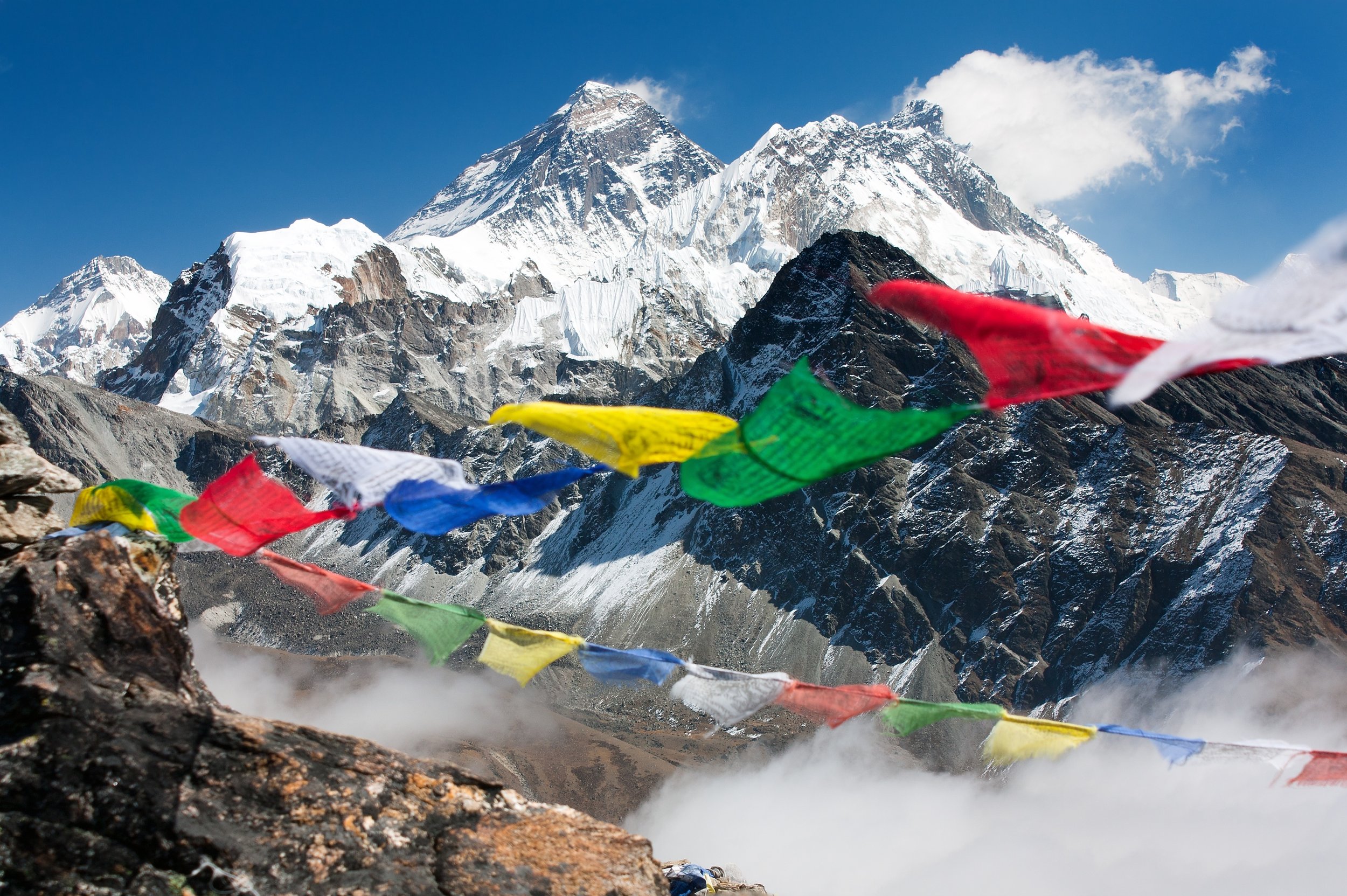
What is the significance of prayer flags?
Prayer flags hold spiritual and cultural significance in Nepal, dotting the landscape of this enchanting country. Fluttering in the wind, these vibrant flags are a common sight, adorning mountain passes, monasteries, rooftops and bridges. Each flag represents a unique prayer or mantra, carrying the hopes and aspirations of the people who have hung them.
Known as "lung ta" in the local language, prayer flags are believed to bring happiness, peace, and good fortune to those who encounter them. The messages on the flags can vary, but they often include mantras such as "Om Mani Padme Hum," invoking the blessings of the Buddha. Others may contain prayers requesting protection from the elements or invoking the compassion of various deities.
Traditionally, prayer flags are made of five different colors, each representing the elements: blue for space, white for air, red for fire, green for water, and yellow for earth. They symbolise harmony between the elements and promote balance in the environment.
Nepalese people hang prayer flags on auspicious occasions, such as during religious festivals, weddings, or even when constructing new buildings. It is believed that the wind carries the prayers and blessings written on the flags, spreading them far and wide. As the breeze caresses the fabric, it is said to activate the sacred power within, granting protection to all who come into contact with it.
The sight of fluttering prayer flags against the backdrop of Nepal's majestic mountains is truly awe-inspiring. It creates a sense of serenity and tranquility in the hearts of both locals and tourists alike. It reminds us of the deep-rooted spirituality that permeates Nepalese culture and their connection to the spiritual realm.
Beyond their spiritual significance, prayer flags also serve practical purposes. In the windy Himalayan region, these flags act as visual markers, guiding climbers along treacherous routes and warning of impending danger. The vibrant colors also add a touch of vibrancy to the otherwise harsh and rugged landscapes, bringing joy and life to the surroundings.
In recent years, prayer flags have gained popularity worldwide as symbols of peace and mindfulness. People from different backgrounds and beliefs are drawn to the beauty and symbolism of these colorful flags, finding solace in their message of unity and compassion.
“For New Futures, the flags and their colours truly represent our hopes and aspirations for all those we continue to help in Nepal.”
Lynne McCucheon, Chair of Trustees

